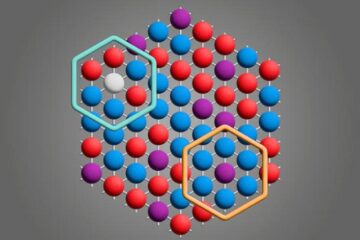New Insight Into Factors That Drive Muscle-Building Stem Cells

These findings could lead to treatments for reversing or improving the muscle loss that occurs in diseases such as cancer and AIDS as well as in the normal aging process, according to the researchers.
Researchers from the Centre for Genomic Regulation (CRG) in Barcelona, Spain, showed that a transient and local rise in an inflammatory signal, the cytokine known as interleukin-6 (IL-6), is essential for the growth of muscle fibers. The findings offer the first clear mechanism for the stem cells’ incorporation into muscle and the first evidence linking a cytokine to this process, said Pura Muñoz-Cánoves, researcher at the CRG. “As we learn more about how muscles grow in adults, we may uncover new methods for restoring lost muscle mass in the elderly and ill,” she added.
Skeletal muscles are made up of individual myofibers, each with many nuclei containing genetic material. As muscles are made to work harder, they adapt by bulking up each of those individual fibers, the researchers explained, but the mechanisms responsible have largely remained elusive.
Mounting evidence has shown that the growth of myofibers is limited by the need to maintain an equilibrium between the number of nuclei and the fibers’ overall volume. Because mature myofibers are incapable of cell division, new nuclei must be supplied by satellite cells (muscle stem cells). Once activated, satellite cells follow an ordered set of events, including proliferation, migration, and incorporation into the myofiber, leading to its growth.
Now, the researchers Antonio Serrano, Bernat Baeza, Eusebio Perdiguero and Mercè Jardí (from Pura Muñoz-Cánoves’ group at the CRG) have found that IL-6 is an essential regulator in that process. While IL-6 was virtually undetectable in the muscles of control mice, animals whose muscles were made to work harder showed an increase in IL-6 after one day. That cytokine rise was maintained for two weeks before it declined again.
Interestingly, systemically high levels of IL-6 had earlier been implicated in the muscle wasting process, Muñoz-Cánoves noted. “Having excess IL-6 is bad, but its local translation is required for muscle growth.”?Dr. Serrano further found that IL-6 was produced both within myofibers and in their associated satellite cells, leading to muscle growth. In contrast, the muscles of mice lacking IL-6 did not show any significant increase in size after several weeks of overloading. The researchers also showed that IL-6 exerts its effects by inducing the proliferation of satellite cells.
While Muñoz-Cánoves said that the findings are “just the beginning” of a new line of investigation into how adult muscle grows, she added that they might ultimately provide a new avenue for muscle-building therapies.?“Treatments could be designed to compensate for or block the pathways leading to muscle loss,” she said. “In muscles that have already lost mass, you might also be able to stimulate muscle growth.”
The researchers include Antonio L. Serrano, Bernat Baeza-Raja, Eusebio Perdiguero, Mercè Jardí, and Pura Muñoz-Cánoves, of the Program on Differentiation and Cancer, Centre for Genomic Regulation (CRG) in Barcelona and Center for Neurodegenerative Diseases (CIBERNED), Spain.
Media Contact
More Information:
http://www.cellmetabolism.orgAll latest news from the category: Life Sciences and Chemistry
Articles and reports from the Life Sciences and chemistry area deal with applied and basic research into modern biology, chemistry and human medicine.
Valuable information can be found on a range of life sciences fields including bacteriology, biochemistry, bionics, bioinformatics, biophysics, biotechnology, genetics, geobotany, human biology, marine biology, microbiology, molecular biology, cellular biology, zoology, bioinorganic chemistry, microchemistry and environmental chemistry.
Newest articles

Microscopic basis of a new form of quantum magnetism
Not all magnets are the same. When we think of magnetism, we often think of magnets that stick to a refrigerator’s door. For these types of magnets, the electronic interactions…

An epigenome editing toolkit to dissect the mechanisms of gene regulation
A study from the Hackett group at EMBL Rome led to the development of a powerful epigenetic editing technology, which unlocks the ability to precisely program chromatin modifications. Understanding how…

NASA selects UF mission to better track the Earth’s water and ice
NASA has selected a team of University of Florida aerospace engineers to pursue a groundbreaking $12 million mission aimed at improving the way we track changes in Earth’s structures, such…





















